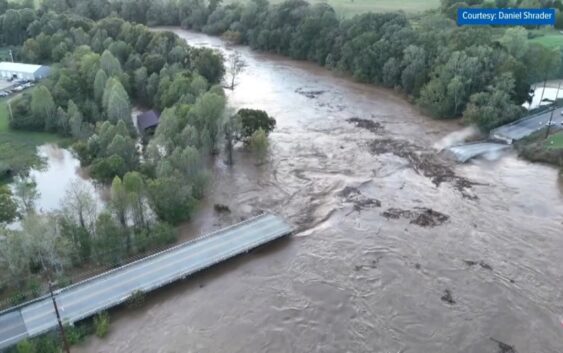- They couldn’t save their daughters’ lives in the July 4 floods. Now they’re dealing with the grief and the guilt.
- Austin could see heavy rains, possible flooding over the next few days
- Families of campers, counselors who died in Texas Hill County floods sue Camp Mystic
- Small plane bound for Jamaica with hurricane relief supplies crashes in Florida neighborhood
- Ask the Meteorologist: Did a tornado hit Johnston County Saturday night?
Tennessee restores 46 out of 49 roads post-Hurricane Helene

TDOT has restored nearly 94% of Tennessee roads damaged by Hurricane Helene in the past eight months. Here’s what work is left.
KNOXVILLE, Tenn. — Nearly 94% of bridges and roads in Tennessee that were closed due to Hurricane Helene are now fully restored, according to the Tennessee Department of Transportation.
TDOT has spent the past eight months repairing infrastructure damaged by the storm. Spokesperson Mark Nagi said the closures had a significant impact on daily life.
“When you think about the people who have to deal with… that were used to using that road every single day and they were using that bridge every day and now they have about a half an hour detour that they have to adjust in part of their daily lives,” Nagi said. “So it’s kind of one of those things you kind of take for granted until it’s gone.”
As of now, TDOT has completed repairs on 46 of the 49 damaged roads. Nagi credits the department’s use of a progressive design-build method for the fast turnaround.
The approach allows for public-private partnerships and enables design and construction phases to run at the same time.
“That allowed us to do a lot of the different phases of those projects at the same time,” Nagi explained. “Otherwise we may have been looking months, even a couple of years down the line before those bridges were fixed. Instead, they were back up and running in less than 8 months.”
This marks the first time TDOT has used the progressive design-build model in Tennessee. The department said it streamlines the design process, speeds up construction and reduces costs since crews are able to begin working earlier and stay on the job continuously.
While Nagi says the progress is “remarkable,” TDOT still has work to do. The remaining projects include U.S. 321 in Carter and Johnson counties, the bridge on State Route 67 in Elizabethton and State Route 353 in Washington County.
“Two of those, SR 159 and the bridge on 67, those are expected to be open later this summer, and then 353 would be looking into 2026,” Nagi said.
While those repairs remain a priority, Nagi says TDOT also has other projects underway. That includes fully reopening both lanes of I-40 in each direction to the North Carolina state line by the end of this year.
“North Carolina, as bad as we were hit on I-40 and Cocke County, North Carolina got it worse,” Nagi said. “So even when we get our section of roadway open, they’re still gonna have some more work to do.”
According to the department’s dashboard, there have been 1,437 total closures since the start of the storm. As of now, 1,395 are fully open, 42 remain closed and 54 have partial access.